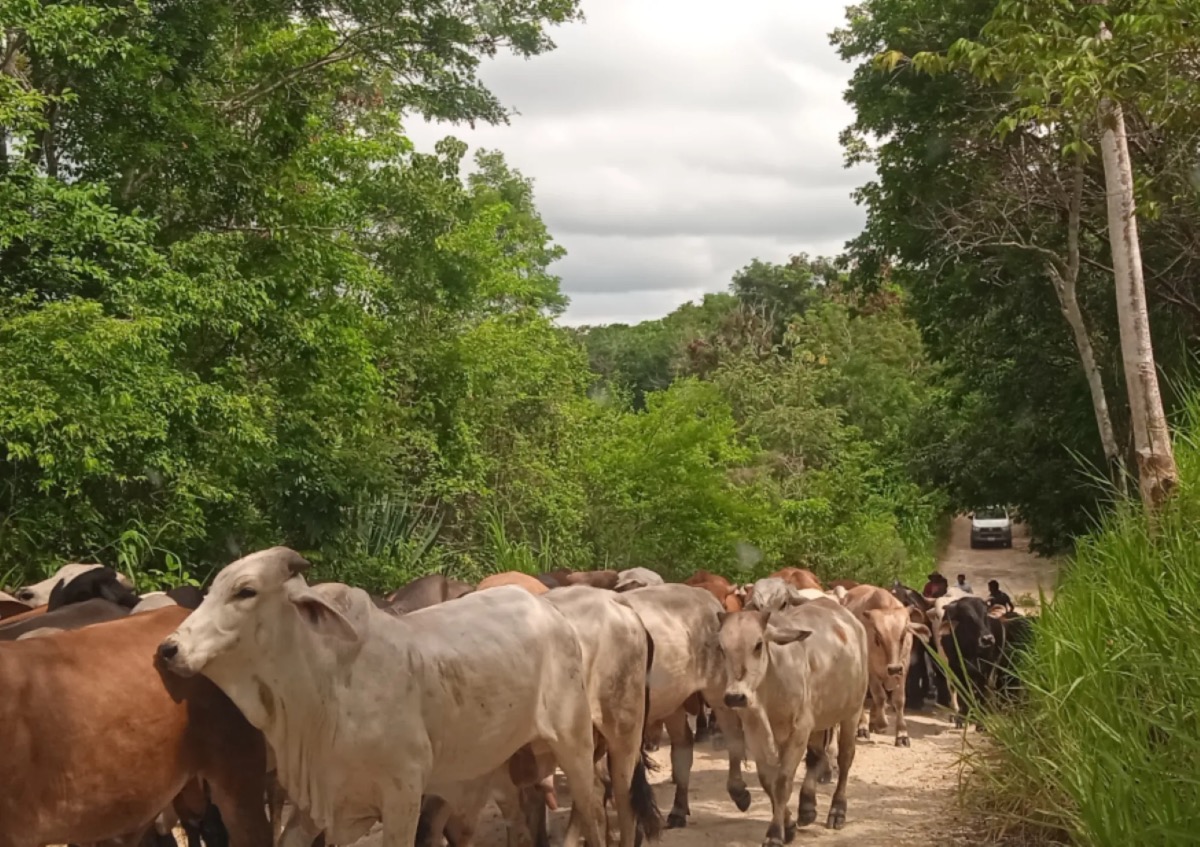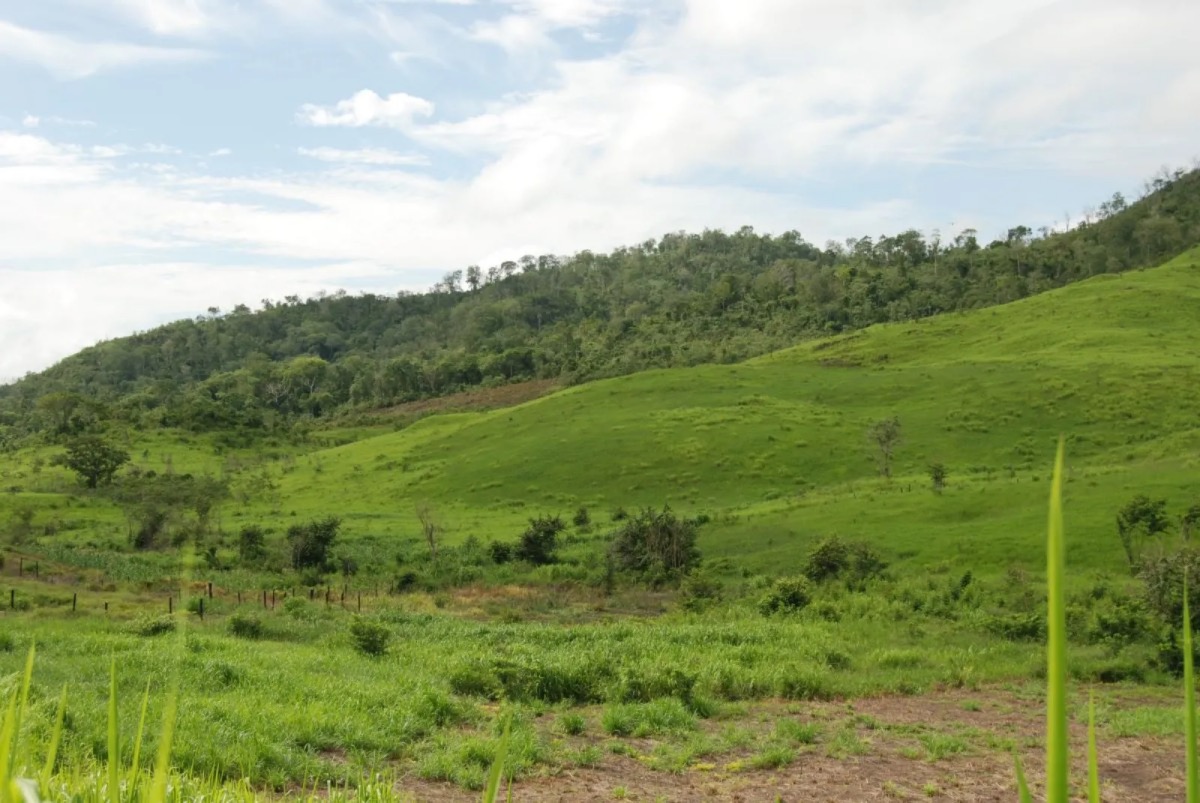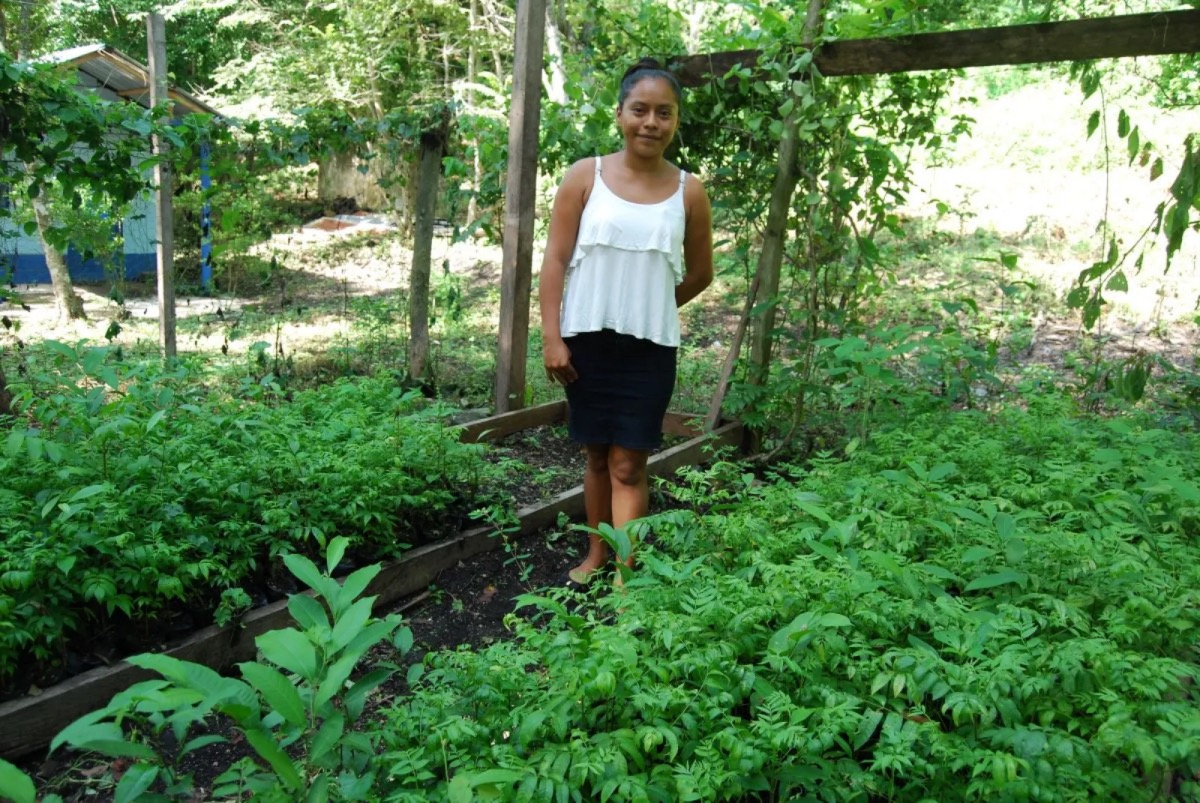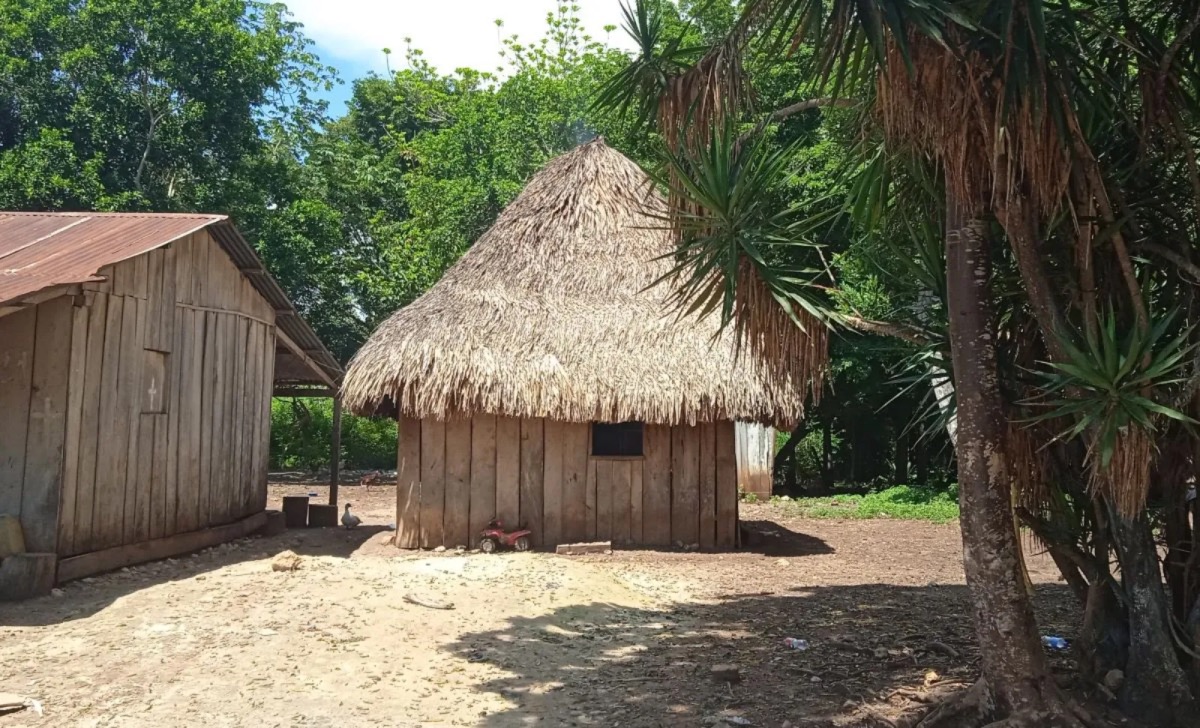
Guatemala’s Maya forest reserve is under threat from cattle ranching but farmers are fighting back by planting trees and protecting wildlife. ANASTASIA MOLONEY, of Thomson Reuters Foundation, reports…
Peten, Guatemala
Thomson Reuters Foundation
Along a dirt path in the heart of Guatemala’s northern Maya Biosphere Reserve – a vast expanse of protected jungle and ancient ruins, ranchers on horseback herd cattle to grazing grasslands.
The cattle and cowboys should not be here.

Illegal cattle ranching in the Maya Biosphere Reserve, Peten, Guatemala, on 13th September, 2023. PICTURE: Thomson Reuters Foundation/Anastasia Moloney
Their illegal incursions are one of the main threats facing the 2.1-million-hectare forest reserve in Guatemala’s Petén region, where ranchers cut down or burn trees to open up land for pastures.
Since the reserve was created in 1991, it has lost a third of its forest cover, according to government data, mainly due to illegal logging, cattle ranching and man-made fires.
“We’re doing all that’s possible to restore and preserve areas and our biodiversity that gives Petén, Guatemala and the world oxygen. It’s a long process. You need patience.”
– community leader Eduardo Acosta
But small-scale farming and Indigenous communities living inside the reserve are fighting back by restoring razed forest and seeking to protect their own livelihoods – from growing food crops to controlled logging – as well as the natural environment.
Standing in a grassy clearing in the middle of the nature reserve, community leader Eduardo Acosta inspected the growth of a cedar tree recently planted by farmers participating in forest restoration projects backed by conservation groups.
“Before, this was forest with tall trees. Grass is our biggest enemy…but we’re slowly winning the battle against the grass,” said Acosta, a farmer from the reserve’s El Colorado community, as the growls of howler monkeys echoed through the distant canopy.
“We’re doing all that’s possible to restore and preserve areas and our biodiversity that gives Petén, Guatemala and the world oxygen. It’s a long process. You need patience,” he said.
Forest can be destroyed and converted into pasture in just weeks, while recovering the land to healthy forest can take three decades, experts say.
Protecting the reserve is crucial for the 200,000 people, including farming and Indigenous communities, who call it home and depend on it to make a living, and also because of the forest’s role in absorbing planet-warming carbon dioxide.
Worldwide, deforestation increased by four per cent in 2022 compared to 2021, meaning the world is well off track to meet pledges to end deforestation by 2030, according to an October report from the Forest Declaration Assessment.
When countries meet for the COP28 climate summit in Dubai in late November, one focus will be the urgent need to protect forests that play a crucial role in efforts to limit global warming to 1.5 degrees Celsius, the lower target set in the Paris Agreement.
Stemming forest losses is key, environmentalists say – but restoring degraded ones is also important to meeting climate and nature protection goals.
Restoring forests is “low-hanging fruit”, said Tim Rayden, a forest expert at the New York-based Wildlife Conservation Society, one of the groups helping restoration efforts in the Maya reserve.
“Areas that are still classed as forest, although degraded, still retain some of the native biodiversity…so simply by stopping your interference in those landscapes you can allow recovery to take place,” Rayden said.
In the Maya Biosphere, some communities have made formal commitments to protect the forest as part of being awarded government permission to sustainably harvest products from it such as xate palm leaves used in decoration, chicle chewing gum and ramón nuts.
Since 1994, the Guatemalan Government has awarded 14 forest concessions for up to 30 years, covering about 20 per cent of the reserve.
Under the concessions, villagers manage and patrol reserve land, and live off the forest, including through controlled logging.
In return, they pledge not to buy or sell land or engage in cattle ranching, slash-and-burn farming, or illegal poaching and logging.
The concession model has helped keep more of the Maya forest standing. Yearly average deforestation rates in concession areas in the reserve are lower than in areas without them, according to researchers.

Grassland areas in the Maya Biosphere Reserve, Peten, Guatemala, on 12th September, 2023. PICTURE: Thomson Reuters Foundation/Anastasia Moloney
But keeping cattle ranchers out of concession areas has not been easy.
Efforts to kick out illegal settlers, often ranchers, start with eviction notices issued by a local judge in Petén who oversees environmental crimes.
Communities then clear grasslands using controlled burning and grass herbicides, opening the way for areas to be planted with new trees or naturally reseed.
Fire breaks are also carved out by hand to prevent the spread of wildfires made worse by rising temperatures and more severe and longer periods of drought.
Over the past decade, about 157,000 hectares of invaded land has been reclaimed in the reserve, of which nearly a third has been reforested, according to WCS.
“The main challenge is to eliminate pastures from the areas and prevent fires in the restored areas to allow natural regeneration and planted trees to develop,” said Gabriela Ponce, Guatemala director with WCS, which provides technical and financial support to community reforesting efforts.
It is tedious, piecemeal and labour-intensive work – and communities need equipment, training and economic incentives to do it, as well as a measure of patience.
We rely on our readers to fund Sight's work - become a financial supporter today!
For more information, head to our Subscriber's page.
For Deura Lopez, a 21-year-old subsistence farmer, the high – by local standards – wage of 100 quetzals ($US6) a day was the lure to join a replanting project at her San Miguel community.
“We work about 10 days a month to restore the forest by taking care of the seedlings that we later plant,” said Lopez, standing beside a nursery of cedar and mahogany seedlings she tends with 30 other women.
“It’s good for our community as we can sell the high-value wood in the future,” Lopez said. Her community is one of seven WCS is working with to try to restore 3,568 hectares across the reserve.
Paying community members to help restore forests also means they are less tempted to work as day labourers on cattle ranches in the reserves, said Pedro Xoná, WCS technical field assistant.
Some are also learning new ways to earn income, such as producing honey, and there are plans to promote eco-tourism, including bird-watching tours.

Subsistence farmer Deura Lopez stands next to a nursery of cedar and mahogany seedlings in the Maya Biosphere Reserve, Peten, Guatemala, on 12th September, 2023. PICTURE: Thomson Reuters Foundation/Anastasia Moloney
But the effort faces challenges, not least the reality that evicting illegal ranchers from the reserve often takes years in a slow and case-clogged justice system, and can be dangerous work.
Eviction notices are served with oversight from soldiers to protect rangers, Xoná said. Two former rangers told Context they had received death threats from ranchers and had been forced to quit their jobs.
Undeterred by the soldiers at the gates to the reserve or by community and park ranger patrols, organised crime groups also pose a threat to the Maya reserve, said a former park official at the government’s National Council of Protected Areas (CONAP).
The groups launder money in the process of buying and selling land and cattle, and are involved in drug trafficking.
“In some cases, land grabbing and organised crime is the same thing,” said Alan Gonzalez, who until October was head of a “multiple-use” zone in the Maya Reserve.
He said currently “there are areas where CONAP can’t enter because of organised crime”, a problem made worse because of recent budget cuts that mean unarmed rangers struggle to access transport and fuel for day-to-day operations.

Homes of villagers in the Maya Biosphere Reserve, Peten, Guatemala, on 12th September, 2023. PICTURE: Thomson Reuters Foundation/Anastasia Moloney
Over the past two decades, the reserve’s lawless northern border with Mexico has also been a magnet for drug traffickers, who fell trees to build clandestine airstrips for small planes.
Despite the challenges, satellite imagery shows forest cover is increasing in some parts of the reserve, while hidden trap cameras show jaguars and scarlet macaws, the bellwether of a healthy forest, are returning to restored habitats.
“When we see the animals and birds come back it gives us hope that our forest can be restored,” Acosta said.






